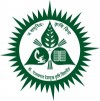| About Project | |||
| Agro Climatic Information | |||
| Research Activities and Achievements | |||
| Mandate | |||
| Scientists | |||
| Contact Information |
About Project
All India Coordinated Research Project on Weed Management was started in April 2015 by ICAR-DWR at Dr.PDKV, Akola, Maharashtra. It is the main centres for weed research at State level. Earlier it was a volunteer centre functioning in the Department of Agronomy, Dr. PDKV, Akola since 2009.
Agro Climatic Information
Vidarbha region of Maharashtra state is mostly characterized by dryland farming. The climatic conditions of this region can be broadly described as semi-arid. The jurisdiction of Dr. Panjabrao Deshmukh Krishi Vidyapeeth is entire Vidarbha region. The region comprises of eleven districts viz. Buldana, Akola, Washim, Amravati, Yavatmal, Wardha, Nagpur, Bhandara, Gondia, Chandrapur and Gadchiroli.
- Assured rainfall kharif (Monsoon-June-September) crop zone (ARK) comprises of Buldana, Akola, Washim, Amravati (excluding Warud and Dhamangaon tahsil) and part of Yavatmal (Pusad and Darwha tahsils) district. Its average rainfall is 693 mm distributed in 46 rainy days. July is the most wet month with 204 mm average monthly rainfall. It is essentially a kharif crop area with predominance of cotton and kharif sorghum. These two crops occupy more than 70% of the area. Among pulses udid, mung and pigeonpea in kharif and chickpea in rabi (Winter-October-January) are grown on considerably large area.
- Moderate Rainfall Zone (MR) is spread over Yavatmal (except Pusad and Darwha tahsil); Nagpur (except Bhiwapur and part of Umred tahsil); Wardha and Chandrapur (Warora, Rajura tahsil) districts. Average annual rainfall is 1133 mm distributed in 59 rainy days. Maximum monthly average rainfall (323 mm) is received in 16 rainy days in July. Cotton, sorghum and pigeonpea are major kharif crops in this zone. Rabi sorghum is grown in Warora, Rajura and Ramtek tahsil. Mung, udid and Chickpea are grown all over the zone.
- High Rainfall Zone (HR) comprises of Bhandara, Gondia, Chandrapur, (excluding Rajura and Warora tahsil), Gadchiroli and Nagpur (Bhiwapur and part of Umred tahsil) districts. Annual rainfall ranges from 1260 mm on western side of the zone to 1700 mm on a far eastern side. Average total annual rainfall is 1402 mm with 61 rainy days. Rainy season is from June to September. However, few showers (about 50 to 60 mm) are obtained in October, which are favourable for rabi pulses. It is predominantly a paddy growing area in kharif and most of the rabi area is under pulses such as chickpea, mung, udid, lathyrus, lentil, dolichos bean etc. Majority of them are under utera condition in which lathyrus is predominant.
Infrastructure Facilities
- Five hectare of land and field laboratory.
- Developed analytical laboratory.
- Developed weed museum.
- Zygrogramma beetle rearing unit.
Research Activities / Achievements
Ongoing Research Work
- To study weed dynamics, crop growth and productivity of different crops and cropping systems with different weed management practices.
- To study the effect of fertigation and weed management practices on crop growth and yield of different cropping system.
- To study the non-chemical methods of weed management in an organic cotton-chickpea cropping system.
- To study the effect of different herbicides on cuscuta in soybean+pigeonpea intercropping system
Research Achievements
- Imazethapyr + imazamox 70% WG @ 0.100 kg/ha at 15 days after sowing (DAS) in soybean.
- Pre-emergence application of diclosulam 84% WDG @ 0.026 kg/ha (30 g/ha commercial formulation in 500 L water) OR propaquizafop @ 0.050 kg + imazethapyr @ 0.075 kg/ha at 21 DAS (2.0 L/ha ready mix commercial formulation in 500 L water) for higher seed yield and economic returns of sole soybean.
- In kharif groundnut application of imazethapyr 35% + imazomox 35 % WG @ 0.100 kg/ha at 15 DAS.
- In maize (kharif) application of atrazine 50% WP @ 1.0 kg/ha as pre-emergence (1-2 days after sowing) followed by tembotrione 33.6% SC @ 285 ml/ha at 20 DAS.
- In turmeric pre-emergence application of pendimethalin 30 EC @ 3.00 lit/ha OR metribuzin 70% WP @ 1.0 kg/ha OR Atrazine 50% WP @ 1.5 kg/ha at 0-5 DAP followed by straw mulch 10 t /ha (10 DAP) followed by one hand weeding (75 DAP) (Research findings).
- In wheat the post-emergence application of clodinafop-propargyl 15% + metsulfuron-methyl 1% WP @ 0.400 kg/ha OR sulfosulfuron 75% + metsulfuron-methyl 5% WG @ 0.040 kg/ha at 35 DAS.
Mandate
- To develop weed management technologies integrating biology of weeds.
- Efficient use of herbicides and their mixtures.
- Survey of weed flora of Vidarbha region of Maharashtra.
- To demonstrate the release technologies on famers field through demonstrations.
- To create awareness amongst farmers regarding safe use of herbicides.
Contact Information
Agronomist & PI
AICRP on Weed Management
Department of Agronomy
Dr. PDKV, Akola.- 444104 (M.S.)
Mobile :
E-mail :
